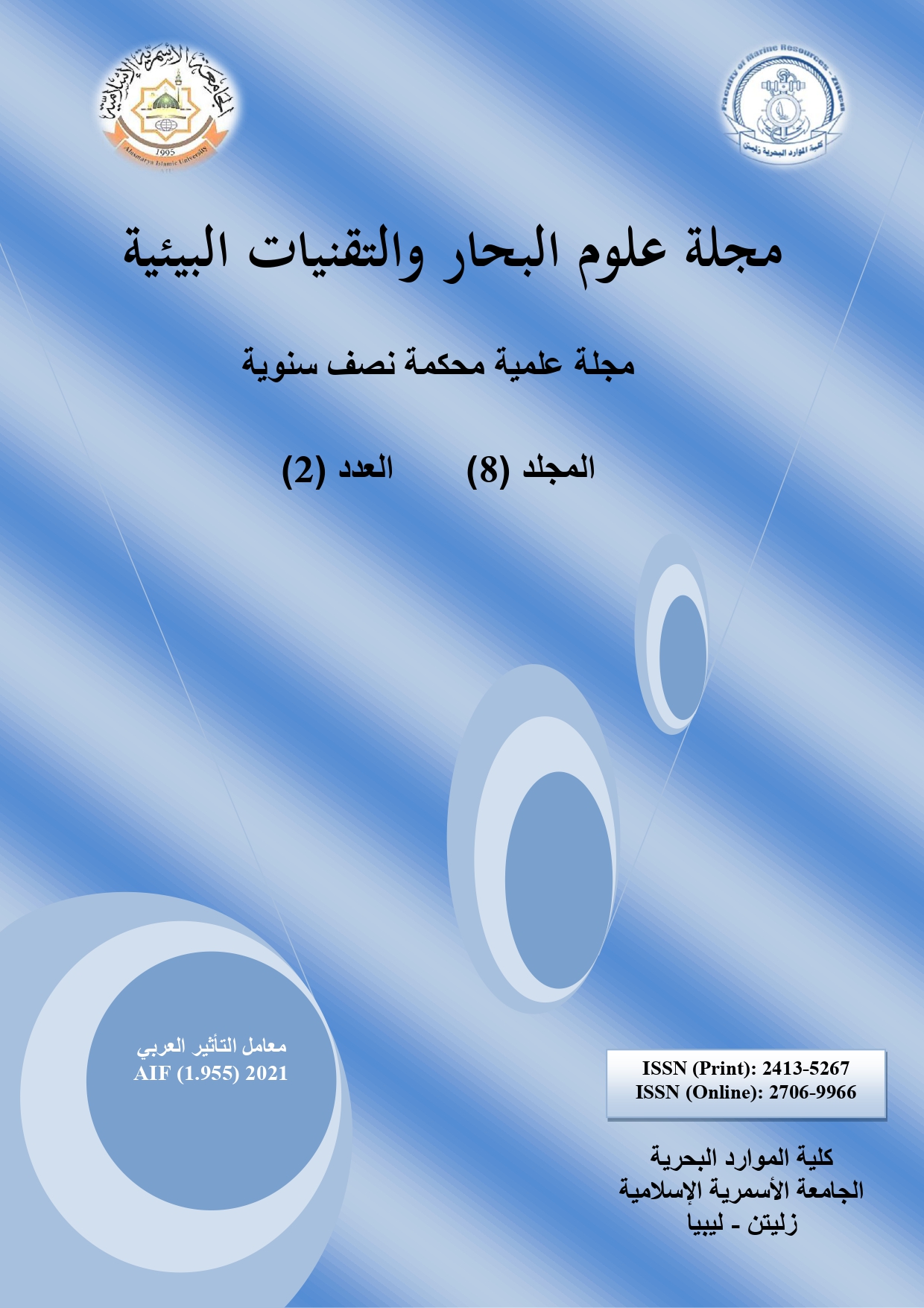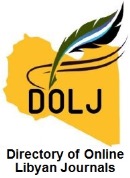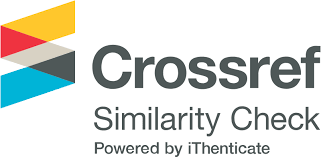دراسة الخصائص الفيزوكيميائية والميكروبية لمياه شاطئ البحر بمدينة توكرة، ليبيا
DOI:
https://doi.org/10.59743/jmset.v8i2.62الكلمات المفتاحية:
الخصائص البكتيرية، الخصائص الفيزيوكيميائية، مياه البحر، توكرةالملخص
هدفت الدراسة الحالية إلى تقييم حالة نوعية المياه في شاطئ توكرة (ليبيا). كما تم دراسة الخصائص الفيزيائية والكيميائية والبكتيرية للمياه. تم جمع عينات الماء من البحر والرواسب لمدة ثلاثة أشهر متتالية خلال عامي (2020-2021) لدراسة العوامل التالية (درجة حرارة الماء والملوحة والتوصيلية الكهربائية والأس الهيدروجيني والأملاح الذائبة الكلية والمتطلب الكيميائي والحيوي للأكسجين والمواد العضوية الذائبة والنترات الفعالة). وقد لوحظ من خلال النتائج أن نسب هذه المتغيرات لم تتجاوز الأرقام القياسية لمياه البحار بالإضافة لوجود تلوث ببكتيريا Escherichia coli (-ve gram) وقد أثبتت فعاليتها للمضادات الحيوية مما يشير لتلوث بالصرف الصحي.
التنزيلات
المراجع
References in English:
Alibi S., Mhamdi S., Hassen W., & Ben Mansour H.B. (2020). Physiochemical and microbial properties of sea water in Rejiche, Tunisia. Arabian Journal of Scientific Research, 2(9): 1-6.
Alipour M., Hajiesmaili R., Talebjannat M., and Yahyapour Y. (2014). Identification and antimicrobial resistance of Enterococcus spp. isolated from the river and coastal waters in northern Iran. The Scientific World Journal, Article ID: 287458, 1-5.
Bengraı̈ne K. & Marhaba T.F. (2003). Using principal component analysis to monitor spatial and temporal changes in water quality. Journal of Hazardous Materials, 100(1-3): 179-195.
Enell M. & Wennberg L. (1991). Distribution of halogenated organic compounds (AOX)–Swedish transport to surrounding sea areas and mass balance studies in five drainage systems. Water Science and Technology, 24(3-4): 385-395.
Griffin D.W., Donaldson K.A., Paul J.H., & Rose J.B. (2003). Pathogenic human viruses in coastal waters. Clinical microbiology reviews, 16(1): 129-143.
Grimvall A., Asplund G., Borén H., & Jonsson S. (1991). Origin of adsorbable organic halogens (AOX) in aquatic environments. In: Organic Micropollutants in the Aquatic Environment: Proceedings of the Sixth European Symposium, Held in Lisbon, Portugal, May 22–24, 1990, 458-464.
Owens N. (2009). What is ocean acidification? Available online at: [http://www.rgs.org/ourwork/Sch-ools/Geography+in+the+news/Ask+the+experts/oce an+acidification.htm].
Poole G.C. & Berman C.H. (2001). An ecological perspective on in-stream temperature: natural heat dynamics and mechanisms of human-caused thermal degradation. Environmental Management, 27: 787-802.
Ralston E.P., Kite-Powell H., & Beet A. (2011). An estimate of the cost of acute health effects from food-and water-borne marine pathogens and toxins in the USA. Journal of Water and Health, 9(4): 680-694.
Sun Y.X., Zhang F., Wang K.L., & Gu P. (2007). Adsorbable organic halogen compounds and bio-toxicity in hospital wastewater treatment. Huan Jing ke Xue: Huanjing Kexue, 28(10): 2219-2222.
Vaghela A., Bhadja P., Ramoliya J., Patel N., and Kundu R. (2010). Seasonal variations in the water quality, diversity and population ecology of intertidal macrofauna at an industrially influenced coast. Water Science and Technology, 61(6): 1505-1514.
References in Arabic:
بورحلي، كريمة (2010). التلوث البحري وتأثيره على البحارة. أطروحة ماجستير، كلية العلوم الإنسانية والاجتماعية، جامعة منتوري، قسنطينة، الجزائر.
التنزيلات
منشور
إصدار
القسم
الرخصة
الحقوق الفكرية (c) 2022 مجلة علوم البحار والتقنيات البيئية

هذا العمل مرخص بموجب Creative Commons Attribution 4.0 International License.












